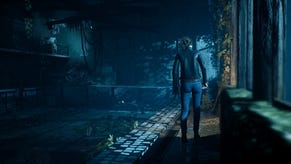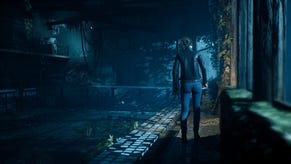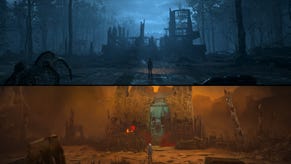The Medium tech analysis: a closer look at Xbox's first next-gen exclusive
An Unreal presentation.
The Medium is a game of two halves - a game where you, playing as Marianne, dart between the world of the living and the dead. This distinct split is a defining factor of the story telling, the production of its soundtrack, and the rendering technology powering the game. It's also a fascinating release in that it walks the line between delivering a next generation experience for the latest Xbox Series consoles - it's not playable on prior gen hardware - while at the same time coming across as a homage to the early 2000s style of horror adventure game.
Produced using Unreal Engine 4 and developed by Polish studio Bloober Team - previously responsible for Observer and Layers of Fear - this game is somewhat different from other excursions into the horror adventure genre, by virtue of its use of third-person perspective camera angles, harkening back to the original Resident Evil. However, what separates this game is a unique feature that appears at points throughout the story - a dual viewport display. Essentially, the game screen is split in two in these scenarios, depicting two halves of the same world. During these sections, your control is mirrored, with roadblocks on one side limiting your progress on the other. This is the game's defining visual feature and it's also rather demanding: the game renders two simultaneous viewports, which can be rather demanding, especially with the way modern engines tend to work.
While there are commonalities in the two game worlds, we are looking at two distinct locations rendered simultaneously, with unique sets of assets per view also increasing the demands on the hardware in terms of streaming, GPU compute and CPU load. For example, rendering components like depth of field, ambient occlusion and motion blur are calculated twice, increasing the cost. On top of that, DXR-accelerated ray tracing is featured on the Xbox Series X and PC versions and the BVH acceleration structure that's a fundamental requirement for this technology must be maintained for both viewports, taxing both CPU and VRAM (which may explain why RT is missing on Xbox Series S).
The Medium's signature dual viewpoint effect could have worn out its welcome if it were used too often. Thankfully, that's not the case - the pacing carefully balances different types of scenarios as you play. For instance, in several areas of the game, rather than playing in split-screen, you'll use mirrors to jump back and forth between the real world and the spirit world. The mirrors themselves reflect the movement and position of your character but serve as a portal to the other side, creating a new effect in the process. During these segments, you can instantly zap between the environments as you work to solve puzzles. It's an intriguing experience, marred only by some texture streaming issues from time to time. Fortunately, this doesn't occur too often during normal play, but I was surprised to see it at all in a game running on the new systems, bearing in mind their high bandwidth SSDs.
If we examine the environments themselves, this is perhaps where The Medium impresses the most. In the world of the living, environments are packed with small, granular details. From the forests surrounding the Niwa resort to the nearby ruins to the abandoned hotel itself - it's all spectacularly realised. Meanwhile, the spirit world is inspired by the Polish painter Beksinski, but that connection perhaps goes slightly deeper than usual. In this world, the dramatic shift in materials create a vastly different sensation and it works exceptionally well. The same can be said for the setting itself, which sets this title apart from the pack: the depiction of the Polish wilderness and the abandoned resort hotel lends The Medium a unique atmosphere that I found compelling throughout - it's a hauntingly beautiful world to explore.
Character models are also nicely detailed, especially those you encounter on the other side. The representation of those inhabitants is suitably creepy and compelling, though I found cutscenes to be let down slightly by somewhat stiff animation, especially when it comes to facial expressions and eye movement. In-game animation is perfectly serviceable but also somewhat stiff. With that said though, within the genre of horror games, it feels like a perfect fit, if that makes sense.
The Medium is available on both Xbox Series X and Series S as well as PC, meaning that this is the first title we've played that cannot run on prior generation Xbox One hardware - and that makes sense, factoring in the unique presentation. Resolution-wise, The Medium uses dynamic resolution scaling with a wider variation than is typical, most likely due to the dual viewport display used throughout the game. While exploring the world in full-screen, resolution tops out at native 4K on Series X and 1080p on Series S: during these segments, DRS scaling averages out to roughly 1440p on X and 900p on Series S. However, when exploring in split-screen mode, the minimum resolution drops further. On Series X, the lowest case is around 900p while the Series S equivalent is 648p. Remember, the game is literally rendering two independent scenes at the same time, explaining the drops in pixel count.
In terms of the ray tracing support, The Medium features RT reflections - but only in certain locations and only on Xbox Series X and PC - with Series S dropping back to more conventional screen-space reflections. They do the job, but simply cannot reproduce detail that isn't present in the current camera view, so detail can to vanish in some scenarios. There are other differences between Xboxes as well: shadows, for instance, are rendered at a lower resolution on Series S. All shadows in The Medium are traditional rasterised shadows, it should be noted, rather than ray traced shadows - with the exception of shadows visible within a ray traced reflection. That said, the reliance on fixed camera angles helps avoid artefacts often associated with traditional shadow maps and the result is superb. Shadows dance around as your flashlight passes across the scenery, while Unreal Engine 4 contact shadows are also used to improve close proximity detail.



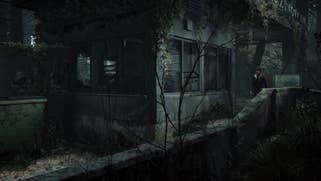
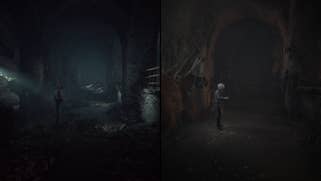
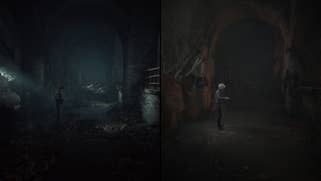
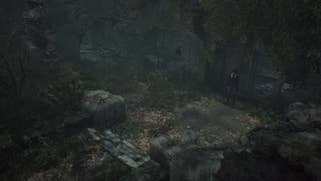
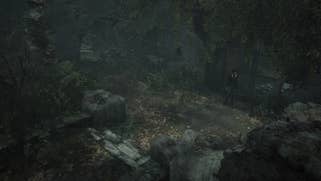
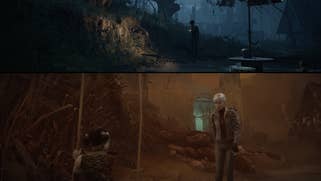
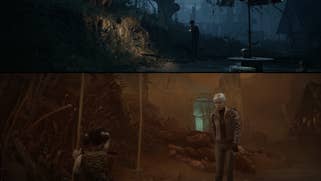
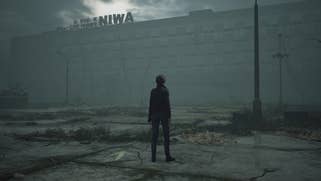
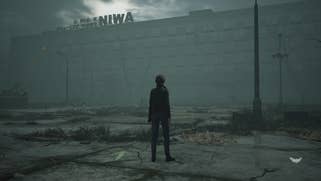
Performance-wise, this is a 30 frames per second experience, which is acceptable for a slow-paced horror adventure game - and the good news is that performance holds up on both Xbox Series X and Series S consoles in most scenarios, whether there's one view being rendered or two. There are some select scenarios with actual performance drops, but thankfully, they are few and far between. However, despite a relatively clean 30fps output, I found that improper frame-pacing is in effect. What this means is that although 30 unique frames are presented each second, they are not delivered evenly on every other screen refresh as they should be. This presents as a more inconsistent experience and some might even perceive a lower frame-rate. We reported this back to the studio, who promise that it will be addressed in a forthcoming patch, along with a current issue in the form of occasional flashing pixels. If you're seeing this during play, don't worry, your console is just fine!
Something else I wanted to address is the audio side of the experience, which is very impressive. No horror game is complete without a properly foreboding soundscape and The Medium delivers. Not surprisingly, in a game about duality, two composers were brought on board. The real world is handled by Arkadiusz Reikowski - who has worked on previous Bloober Team projects - while the spiritual tracks are handled instead by composer Akira Yamaoka, whose credits include Kensei Sacred Fist and Silent Hill. The result is remarkably atmospheric and rich. The mix of these beautiful, often haunting tracks, combined with the superb surround sound implementation make for a very powerful audio experience. More than the visuals even, the sound really helped pull me into the game. I highly recommend playing using either a high-end surround setup or at least a high-quality pair of headphones for the best experience.
And experience it, you should! While there's no doubt that The Medium is a little rough around the edges in terms of polish and its overall production values, the fact is that it's a beautiful and memorable horror adventure, and I'd rank it as the best title to emerge from Bloober thus far. It's also available on day one via Game Pass, so I'd hope to see an impressive game get a lot of extra exposure as a consequence. I do think it's worth stressing that despite being an Xbox platform exclusive for now, The Medium is not a triple-A juggernaut in the traditional sense, but it is different, it is unique, and I highly recommend checking it out.







